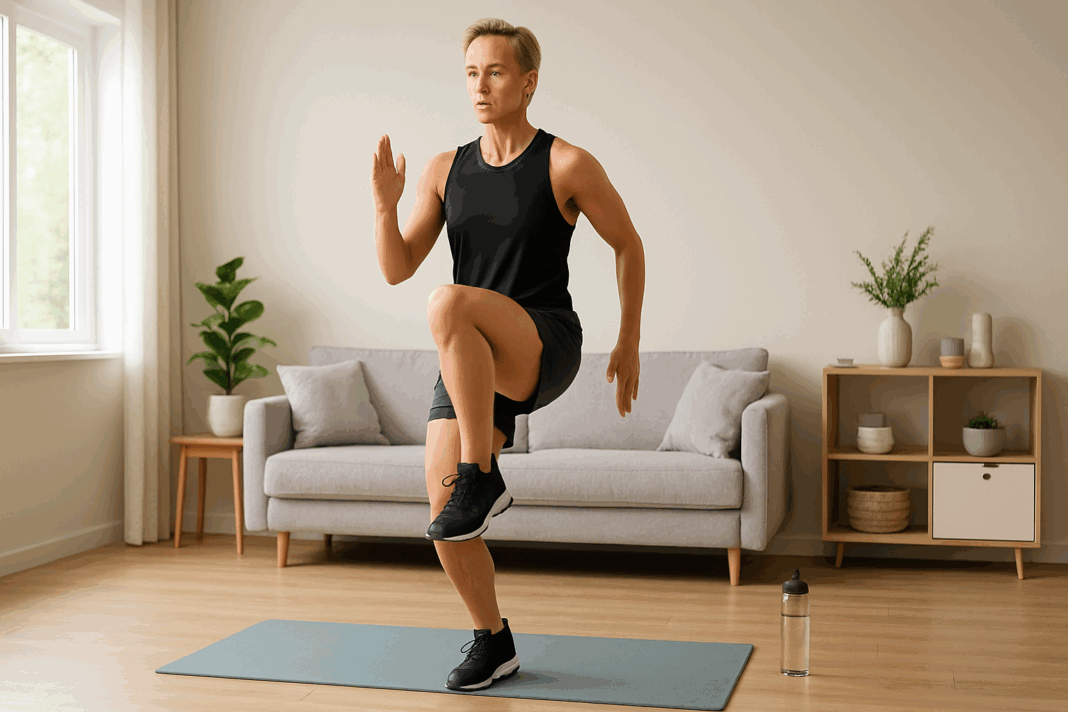In a world increasingly driven by convenience and digital immersion, achieving sustainable fat loss without stepping into a gym is not only desirable but highly attainable. For those seeking a flexible, practical, and scientifically supported solution, incorporating an effective at home cardio workout to burn fat presents a transformative opportunity. Home-based routines eliminate common barriers like time constraints, expensive memberships, and logistical challenges. More importantly, they empower individuals to embrace consistent physical activity that aligns with their unique schedules and environments. By understanding the physiology of fat burning and the strategic implementation of cardio exercises, it becomes evident that working out at home can deliver powerful and lasting results. Whether your goal is to shed stubborn fat, elevate cardiovascular endurance, or revitalize your lifestyle, this guide unveils the most efficient methods for harnessing home cardio to achieve those objectives.
You may also like: Optimize Your Physique With Smart Nutrition: Harnessing Peptides for Muscle Growth and Fat Loss
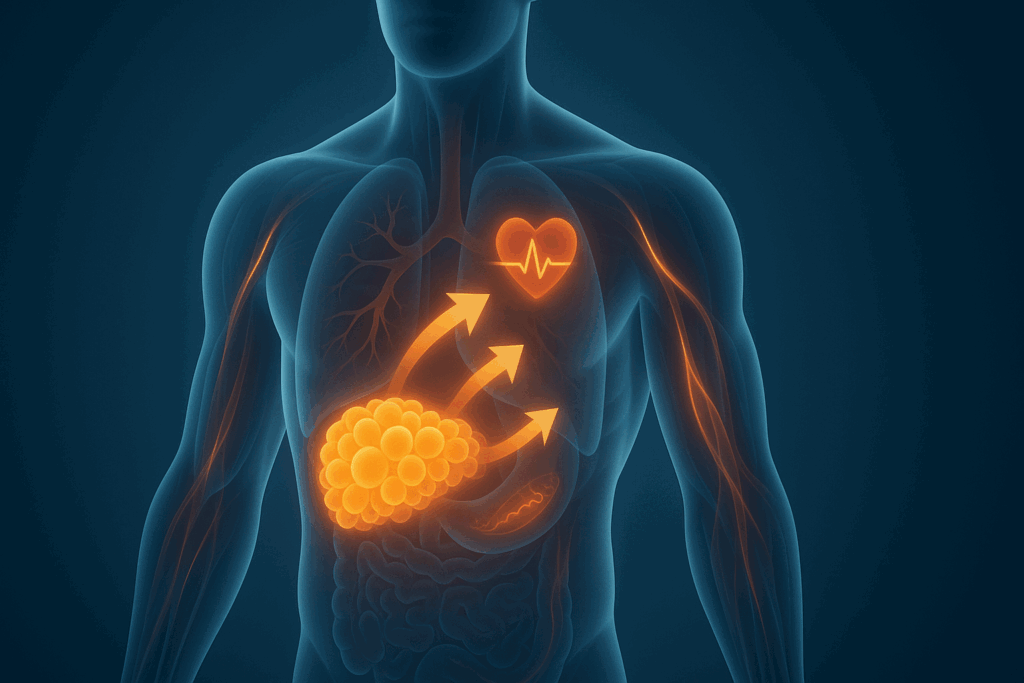
Understanding Fat Loss: Physiology and Principles
To comprehend why at home cardio workouts are effective for fat loss, one must first understand the underlying physiological mechanisms. Fat loss occurs when the body burns more calories than it consumes, a state known as a caloric deficit. In this state, the body taps into stored fat cells to meet its energy demands. Cardio exercises, particularly those of moderate to high intensity, increase the heart rate and accelerate calorie expenditure, making them ideal for initiating this energy deficit.
However, fat loss is not solely about the calories burned during exercise. The concept of Excess Post-exercise Oxygen Consumption (EPOC) reveals that certain workouts continue to elevate metabolic rate even after the session ends. High-intensity intervals, for example, stimulate EPOC more significantly than steady-state exercises. Additionally, hormonal responses during cardio workouts, such as the release of adrenaline and growth hormone, play critical roles in mobilizing fat stores. When performed consistently and paired with a balanced diet, these workouts can shift the body’s composition toward a leaner, more efficient state.
The Role of Cardio in Fat Burning
Cardiovascular exercise is one of the most efficient methods for increasing energy expenditure. It targets large muscle groups, raises heart rate, and improves oxygen delivery, creating a metabolic environment conducive to fat oxidation. The best cardio exercises to burn fat are those that engage multiple joints and muscle groups simultaneously, thereby maximizing caloric output and enhancing post-workout recovery processes.
Aerobic workouts, such as brisk walking, jogging, or cycling, promote sustained energy use, which is ideal for burning fat during the activity itself. In contrast, anaerobic forms like sprinting or HIIT (High-Intensity Interval Training) spike the heart rate quickly and rely on glycogen stores initially, but they also significantly increase EPOC, contributing to fat loss over time. The combination of both modalities can yield superior results. When integrated into a structured plan, these exercises ensure variety, maintain engagement, and target both immediate and residual fat-burning pathways.
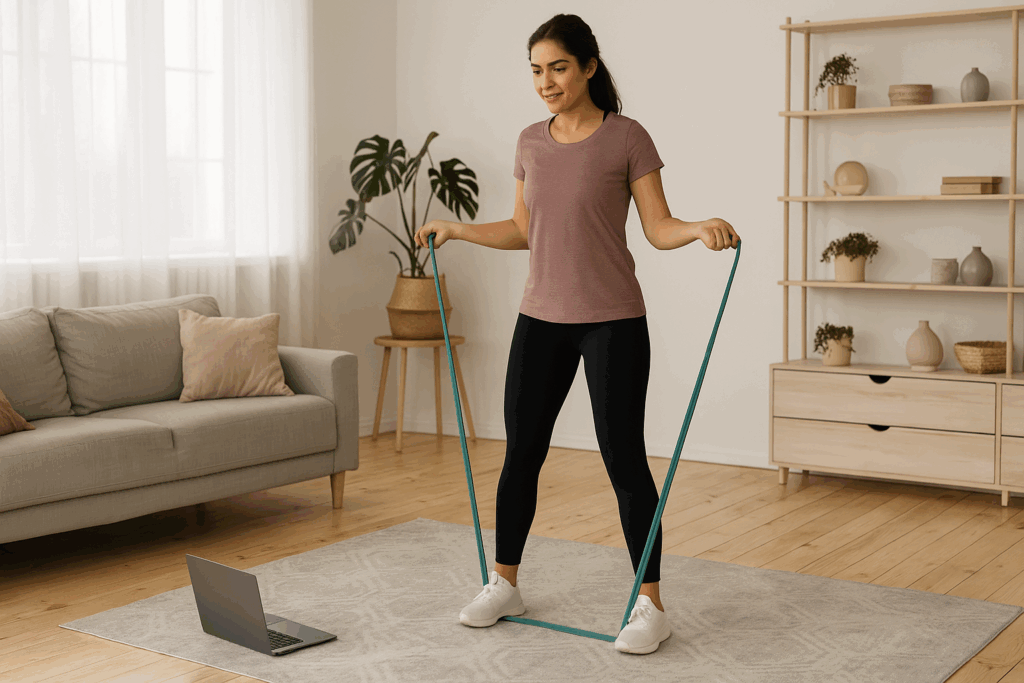
Benefits of Choosing At Home Workouts
The growing popularity of home workouts is no coincidence. Convenience is a compelling factor; workouts can be performed without commuting, saving time and reducing barriers to consistency. Additionally, the privacy of a home setting can increase confidence, particularly for beginners or those returning to exercise after a hiatus. Flexibility is another advantage, as individuals can design sessions around their schedules, accommodating family responsibilities or professional demands without sacrificing fitness goals.
Financially, home workouts present a cost-effective alternative to gym memberships or boutique classes. With minimal equipment, such as resistance bands, a jump rope, or even just bodyweight, one can design comprehensive routines. Furthermore, the reduced risk of exposure to illnesses in public settings adds a layer of safety, particularly in a post-pandemic landscape. Psychological benefits also emerge: home workouts can be tailored to personal preferences, creating a sense of ownership and intrinsic motivation that enhances long-term adherence and results.
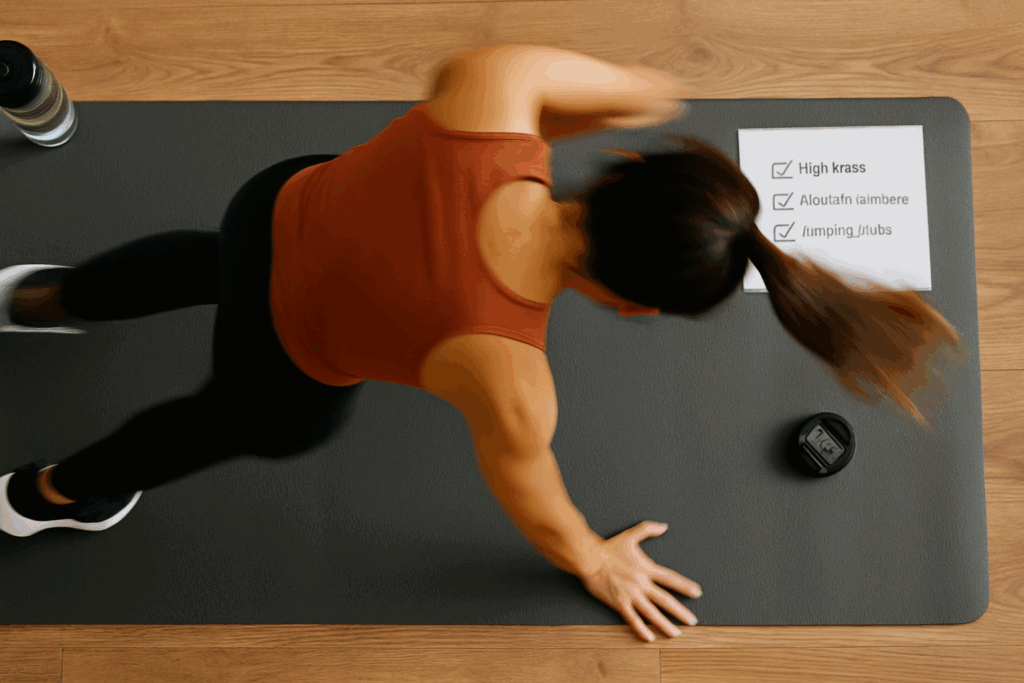
Designing the Most Effective At Home Cardio Workout to Burn Fat
Creating a home cardio routine that effectively burns fat begins with understanding your current fitness level and goals. Beginners may focus on low-impact movements to build endurance, while advanced individuals might integrate explosive, plyometric exercises to challenge intensity thresholds. A well-designed routine should include a warm-up, a main cardio circuit, and a cool-down period to promote safety and recovery.
An effective sample structure might include jumping jacks, high knees, burpees, mountain climbers, and jump squats, each performed for 30-60 seconds with short rest intervals. These exercises raise the heart rate rapidly, engage multiple muscle groups, and require no equipment. Incorporating movement patterns that alternate between upper and lower body actions can increase circulation and caloric burn. The key to sustaining effectiveness lies in progressive overload—gradually increasing intensity, duration, or complexity to continue challenging the body.
Implementing the Best Aerobic Exercise for Weight Loss
Aerobic exercise remains a cornerstone of fat-loss programs, particularly due to its accessibility and versatility. The best aerobic exercise for weight loss is one that can be maintained consistently, performed with sufficient intensity, and adapted to individual needs. Walking briskly around the neighborhood, dancing to high-tempo music, or following online aerobics videos are excellent starting points. These activities elevate the heart rate, enhance endurance, and support cardiovascular health without requiring advanced skill levels.
As aerobic capacity improves, integrating more structured routines such as step aerobics, treadmill intervals (if equipment is available), or online cycling classes can enhance variety and motivation. Duration plays a critical role: sustaining moderate intensity for at least 30 minutes three to five times a week has been shown to significantly contribute to fat reduction. Additionally, combining aerobic sessions with light resistance training can enhance muscle tone and prevent lean tissue loss, further promoting a healthy metabolic rate.

High-Intensity Intervals: A Powerful Cardio Program to Burn Fat
High-Intensity Interval Training (HIIT) represents one of the most effective strategies for maximizing fat loss in a short time frame. This method alternates between periods of intense effort and brief recovery, creating a metabolic demand that boosts both immediate calorie burn and long-term fat oxidation. A well-structured HIIT routine can be performed at home with minimal space and no equipment, making it an ideal cardio program to burn fat efficiently.
A typical HIIT session might involve 20 seconds of sprinting in place followed by 10 seconds of rest, repeated for several rounds. Other variations include jumping lunges, skater hops, and tuck jumps. The key is to push the body close to its anaerobic threshold during the work intervals, which stimulates mitochondrial adaptation and hormonal responses that favor fat breakdown. Studies have shown that even 15-20 minutes of HIIT can outperform longer sessions of steady-state cardio in terms of fat loss and cardiovascular improvements.
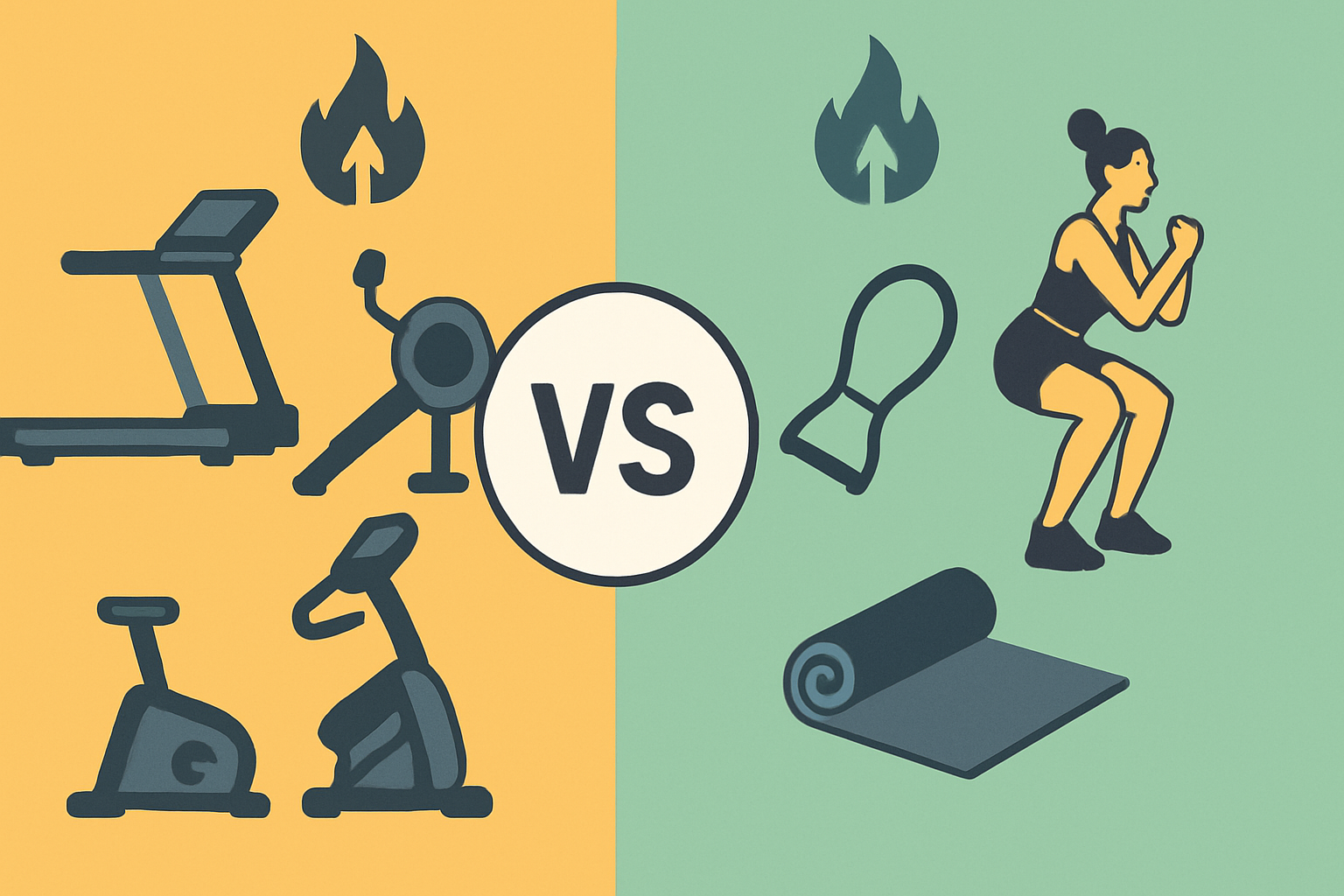
Best Workouts to Burn Fat at the Gym vs. At Home: Comparative Insights
While gyms offer specialized equipment and a social environment, at home cardio workouts have evolved to rival gym-based routines in effectiveness. The best workouts to burn fat at the gym often include treadmill sprints, rowing, stair climbing, or circuit training with machines. These exercises offer precision control over intensity and resistance, which can benefit individuals seeking specific performance benchmarks.
However, at home workouts offer unparalleled flexibility and personalization. With smart programming and consistency, bodyweight circuits, resistance bands, and household items (like a chair or towel) can simulate gym-based stimuli. Moreover, eliminating commute time and enhancing comfort can lead to greater adherence and ultimately better results. The choice between home and gym depends on personal preference, but the critical factor remains the same: consistency and effort determine success, not location.
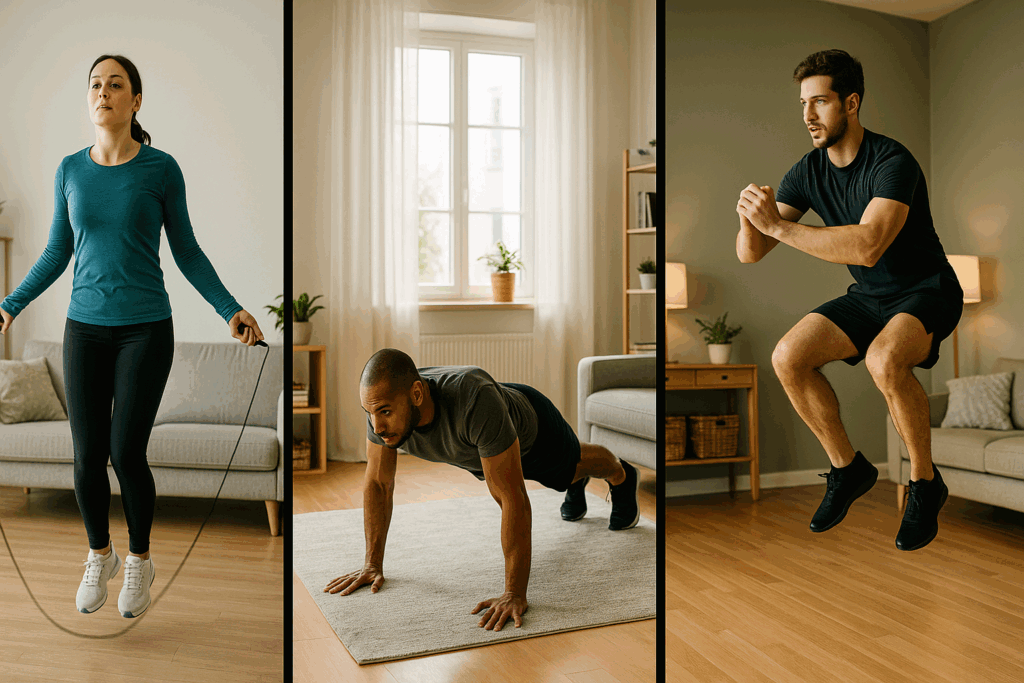
Maximizing Results with the Best Cardio Exercises to Burn Fat
Certain cardio exercises consistently outperform others in terms of caloric expenditure and fat-burning potential. Among these, jump rope routines, burpees, and squat jumps rank highly due to their high metabolic demand. These exercises combine cardiovascular exertion with muscular activation, leading to a greater total energy output and improved muscle definition.
To maximize fat loss, it’s important to perform these movements with proper form and intensity. For example, a jump rope session with alternating footwork challenges coordination and stamina while burning up to 10-15 calories per minute. Burpees, which incorporate squatting, jumping, and push-ups, engage nearly every major muscle group. Squat jumps enhance lower-body strength and explosive power, which increases overall energy use. Integrating these movements into a circuit format with limited rest ensures sustained elevation of the heart rate and optimized fat oxidation.
Sustaining Progress: How to Stay Motivated with At Home Cardio
One of the primary challenges in any fitness journey is maintaining consistency over time. To remain engaged with an at home cardio workout to burn fat, it is essential to build a routine that is both enjoyable and goal-oriented. Setting short-term objectives, such as increasing workout duration or mastering a new movement, fosters a sense of progress and accomplishment. Tracking these milestones using journals or fitness apps can reinforce accountability and motivation.
Variety also plays a critical role. Alternating between different formats—such as dance cardio, interval running, or kickboxing—prevents boredom and introduces new physical stimuli. Incorporating music, virtual classes, or workout partners (even virtually) can enhance the social and sensory dimensions of home fitness. Visualizing success, celebrating non-scale victories, and aligning workouts with personal values (like stress relief or energy for parenting) can deepen emotional investment and sustain momentum over the long term.
Debunking Myths About Cardio and Fat Loss
Despite widespread acceptance of cardio for weight loss, several misconceptions persist. One common myth is that low-intensity cardio burns more fat than high-intensity intervals. While it’s true that a higher percentage of calories burned during low-intensity exercise come from fat, the total calorie expenditure and EPOC from high-intensity workouts are significantly greater, making them more effective overall for fat loss.
Another myth is the belief that cardio must be done in the morning on an empty stomach to be effective. Research shows that total energy expenditure across the day is more important than timing. Exercising when energy and motivation are highest is more conducive to adherence and intensity. Lastly, the idea that cardio alone is sufficient for fat loss ignores the importance of diet, strength training, and recovery. A holistic approach that includes a well-balanced diet, adequate sleep, and resistance exercise ensures sustainable, long-term fat loss outcomes.
Incorporating the Best Aerobic Workout for Weight Loss into Your Weekly Routine
To build a sustainable and effective weekly routine, it is important to align aerobic workouts with your lifestyle and recovery needs. Begin by selecting three to five days per week where at home cardio workouts can be realistically performed. Choose the best aerobic workout for weight loss based on time availability, fitness level, and preference. For example, a 30-minute dance session may suit a busy morning, while a 45-minute interval walk fits well into the evening routine.
Recovery days should be planned to allow muscular and cardiovascular systems to repair and adapt. Active recovery options such as gentle yoga, stretching, or leisure walking support mobility and circulation without overtaxing the body. On more intense days, integrate intervals or circuits that challenge anaerobic capacity. Monitoring energy levels and adjusting intensity based on sleep, stress, and nutrition helps prevent burnout and plateaus. The result is a dynamic, adaptable, and efficient weekly plan that fosters continuous progress.
Nutritional Synergy: Fueling Your Body for Optimal Fat Burn
Cardio alone cannot compensate for poor dietary habits. To fully reap the benefits of a cardio program to burn fat, it is crucial to support your body with appropriate nutrition. A balanced diet rich in whole foods, lean proteins, complex carbohydrates, and healthy fats enhances energy levels, supports recovery, and maintains muscle mass. Protein intake is particularly important, as it preserves lean tissue during a caloric deficit and promotes satiety, reducing the likelihood of overeating.
Pre-workout meals should include easily digestible carbohydrates to fuel performance, while post-workout meals should focus on protein and carbohydrates to replenish glycogen and repair muscle fibers. Hydration plays a critical role as well, supporting thermoregulation and metabolic function. Avoiding processed foods, excessive sugar, and alcohol can further enhance metabolic efficiency and reduce inflammation. By aligning dietary habits with exercise, the body becomes an optimized machine for fat oxidation and performance.
Monitoring Progress and Adjusting for Continued Results
Tracking progress in a fat-loss journey requires more than stepping on the scale. While body weight can offer general insight, it does not reflect changes in muscle mass, water retention, or hormonal fluctuations. A more accurate picture emerges from a combination of metrics: waist circumference, clothing fit, energy levels, and workout performance. Progress photos and fitness journals can provide qualitative validation of transformation over time.
Adjustments to the workout plan may become necessary as fitness improves. This can involve increasing the duration of aerobic sessions, adding new HIIT sequences, or integrating strength-based movements. Periodization—alternating between phases of high intensity and lower intensity—prevents overtraining and supports long-term adherence. Embracing flexibility in the routine, while keeping a consistent commitment to effort, enables sustained results without burnout.

The Future of Fat Loss: Integrating Technology into At Home Cardio
The integration of technology into at home fitness has revolutionized the way individuals engage with their health. From wearable trackers that monitor heart rate and caloric burn to virtual platforms that offer guided workouts and community support, technology enhances accountability and personalization. AI-driven fitness apps can tailor routines to specific goals, adapt to user feedback, and provide real-time coaching, bringing a level of sophistication previously exclusive to personal trainers.
Virtual reality and augmented reality workouts introduce gamification, transforming traditional exercise into immersive experiences. This engagement promotes consistency, particularly among individuals who struggle with traditional routines. Moreover, technology facilitates data-driven decision-making, allowing users to identify patterns, optimize recovery, and prevent injury. As innovation continues, the possibilities for effective and enjoyable home-based fat loss expand, making fitness more accessible and impactful than ever.
Embracing the Journey: A Mindful Approach to Fat Loss
Fat loss is not merely a physical endeavor; it is deeply intertwined with mental and emotional well-being. Cultivating a mindful approach can transform the experience from one of struggle to one of empowerment. Rather than obsessing over numbers or comparing progress to others, focusing on internal cues such as energy, confidence, and resilience fosters a healthier relationship with the body. Mindful cardio—engaging in movement with intention and awareness—deepens the connection between mind and muscle, enhancing the quality of each session.
Practicing gratitude for the body’s capabilities, celebrating small wins, and reframing setbacks as opportunities for growth can build emotional resilience. Integrating mindfulness practices such as meditation or journaling further supports clarity, motivation, and self-compassion. When fat loss is approached with mindfulness, it becomes a sustainable and life-affirming process, rather than a punitive pursuit. This internal shift is often the most transformative outcome of the journey.
Frequently Asked Questions (FAQ): Exploring the Science Behind an At Home Cardio Workout to Burn Fat
1. How does body composition affect the effectiveness of an at home cardio workout to burn fat?
Body composition plays a significant role in determining how effectively you respond to an at home cardio workout to burn fat. Individuals with higher muscle mass tend to have a faster resting metabolic rate, which means they burn more calories even at rest, making cardio sessions more efficient in reducing fat stores. Conversely, those with higher body fat percentages may initially experience a more rapid weight loss due to a higher calorie burn during movement, but may need to increase intensity over time to maintain progress. It’s also worth noting that muscle weighs more than fat by volume, so changes in body composition might not immediately reflect on the scale. Therefore, combining cardio with resistance training can be particularly advantageous for long-term fat loss, helping to preserve or increase lean tissue.
2. Can genetics influence how well someone responds to a cardio program to burn fat?
Yes, genetics can significantly influence your responsiveness to a cardio program to burn fat. Factors such as your aerobic capacity, fat oxidation rate, and distribution of muscle fiber types can all be genetically determined and affect how your body adapts to cardio workouts. For instance, individuals with more slow-twitch muscle fibers often excel in endurance-based exercises, enhancing their efficiency with steady-state cardio. Others may respond better to explosive movements due to a predominance of fast-twitch fibers, making high-intensity intervals more beneficial. However, while genetics can influence the rate of progress, consistent effort, proper nutrition, and a structured plan can help anyone see meaningful results.
3. How often should I switch my at home cardio workout to burn fat for continued effectiveness?
To prevent adaptation and plateau, it’s recommended to change your at home cardio workout to burn fat every four to six weeks. This doesn’t necessarily mean abandoning your current exercises entirely, but rather modifying variables such as duration, intensity, rest intervals, or exercise combinations. Introducing new modalities like dance, kickboxing, or shadowboxing can also stimulate different muscle groups and keep your sessions mentally engaging. Periodic adjustments maintain physiological stress on the body, which is essential for ongoing fat loss and cardiovascular improvements. Tracking your performance metrics can help you identify when a routine is no longer yielding results and needs refinement.
4. What role does sleep play in enhancing the benefits of a cardio program to burn fat?
Sleep is a critical yet often overlooked component in any cardio program to burn fat. During deep sleep cycles, the body undergoes hormonal regulation, particularly with leptin and ghrelin—two hormones that influence appetite and satiety. Poor sleep increases cravings and reduces impulse control, leading to overeating and diminished workout energy. Furthermore, inadequate rest impairs muscle recovery and reduces the effectiveness of fat oxidation during exercise. Consistently getting 7-9 hours of quality sleep enhances mood, performance, and metabolic efficiency, all of which contribute to more successful fat-loss outcomes over time.
5. How do I choose the best aerobic workout for weight loss if I have joint issues or mobility limitations?
Selecting the best aerobic workout for weight loss when dealing with joint issues requires prioritizing low-impact exercises that still elevate the heart rate. Activities such as seated cardio routines, swimming, or chair aerobics can deliver effective cardiovascular benefits without putting undue stress on the joints. Using resistance bands in conjunction with aerobic movements can also enhance muscle engagement while maintaining a low-impact profile. Additionally, focusing on longer durations at moderate intensity can compensate for the lower calorie burn typically associated with gentler exercises. Consulting a physical therapist or certified trainer can provide a customized plan that aligns with your physical capabilities and weight loss goals.
6. Can I combine mindfulness techniques with the best aerobic workout for weight loss to boost outcomes?
Absolutely. Incorporating mindfulness practices into your routine can significantly enhance the effectiveness of even the best aerobic workout for weight loss. Techniques such as focused breathing, body scanning, or setting intentions before and during cardio sessions can improve concentration and emotional regulation. This not only increases the likelihood of consistent adherence but also reduces perceived exertion, making workouts feel more manageable and rewarding. Mindfulness has been shown to reduce stress-induced eating and support better dietary habits, both of which are integral to fat loss. The integration of mind and body creates a holistic approach that fosters sustainable lifestyle changes.
7. How does motivation differ when following an at home cardio workout to burn fat compared to gym-based training?
Motivation for an at home cardio workout to burn fat often hinges on convenience, autonomy, and personal accountability. While the gym provides an environment of external stimuli and social reinforcement, home workouts require intrinsic motivation and self-regulation. Some individuals thrive in the privacy and flexibility of home routines, finding it easier to stay consistent without commuting or conforming to a gym schedule. However, others may struggle without the structure and energy of a communal space. Implementing tools like virtual coaching, fitness communities, and visual goal tracking can help bridge this gap, maintaining enthusiasm and adherence.
8. Are there any psychological advantages to performing the best cardio exercises to burn fat in a home setting?
Yes, there are several psychological advantages. Performing the best cardio exercises to burn fat at home can reduce performance anxiety and allow individuals to explore new movements without fear of judgment. This freedom fosters a greater willingness to experiment and personalize routines, which can lead to increased enjoyment and long-term consistency. Additionally, the ability to create a workout environment that aligns with your sensory preferences—such as music choice, lighting, or room temperature—can enhance focus and motivation. Establishing a positive emotional association with your workout space also contributes to building a sustainable fitness habit.
9. What are the key differences between the best workouts to burn fat at the gym and those performed at home?
The best workouts to burn fat at the gym often utilize specialized equipment such as elliptical machines, rowing machines, and battle ropes, allowing for precise control over resistance and variety. Gym settings also provide access to personal trainers and structured programs, which can accelerate progress for those new to fitness. In contrast, home workouts rely more on bodyweight exercises, minimal equipment, and creative programming to achieve similar results. While gym workouts may allow for higher absolute intensities, at home routines can be more time-efficient, adaptable, and cost-effective. Ultimately, the best environment is one that encourages consistency, engagement, and ongoing progression, regardless of location.
10. What workout burns fat the fastest when time is limited and resources are minimal?
When time and resources are limited, high-intensity interval training (HIIT) remains the standout answer to what workout burns fat the fastest. HIIT alternates short bursts of maximal effort with brief recovery periods, enabling substantial calorie expenditure in as little as 15-20 minutes. Exercises like jump squats, burpees, and high knees require no equipment and can be modified for different fitness levels. This approach not only maximizes fat burn during the workout but also enhances post-exercise oxygen consumption, prolonging calorie burn for hours afterward. For best results, combine HIIT with sufficient hydration, pre-workout fueling, and mindful recovery strategies.
Conclusion: Unlocking Sustainable Change with the Best At Home Cardio Workout to Burn Fat
Achieving sustainable fat loss does not require expensive equipment, a gym membership, or endless hours of exercise. With the right mindset, structured planning, and a focus on consistency, an at home cardio workout to burn fat can become the cornerstone of a healthier, more energized life. By understanding the science of fat loss, leveraging the best aerobic workout for weight loss, and incorporating a diverse range of effective movements, individuals can transform their bodies and habits from the comfort of their own space.
The integration of technology, mindfulness, and nutrition further enhances this process, creating a holistic framework for success. Rather than seeking shortcuts or quick fixes, embracing a long-term, strategic approach yields results that are not only visible but enduring. Whether you’re just starting or refining an existing routine, the path to effortless fat loss begins with a single, intentional step at home. Through dedication and informed action, you unlock not just fat loss, but a vibrant, empowered version of yourself.
Further Reading:
Best Cardio Exercises for Weight Loss: Top 8 Workouts to Burn Fat Fast


